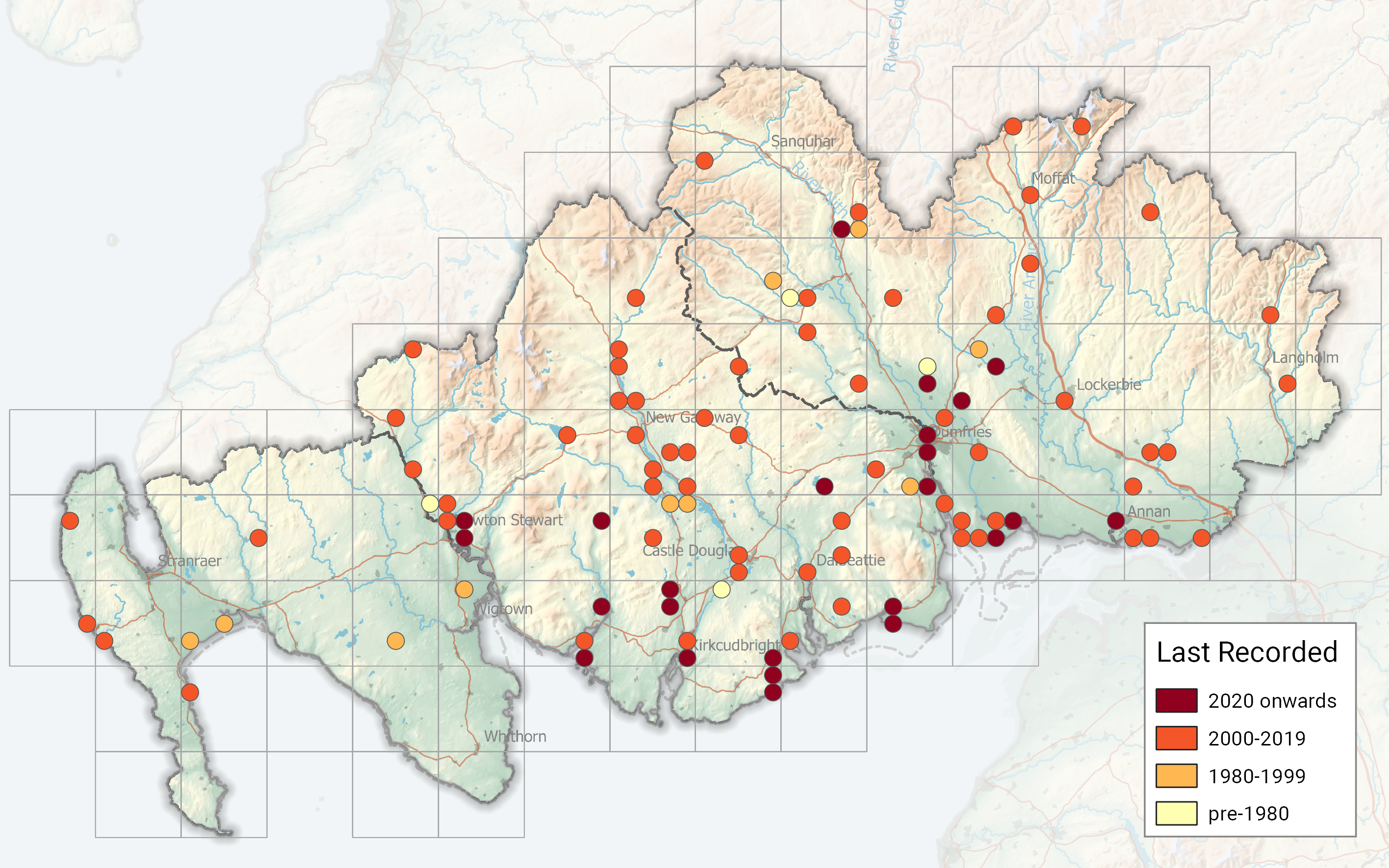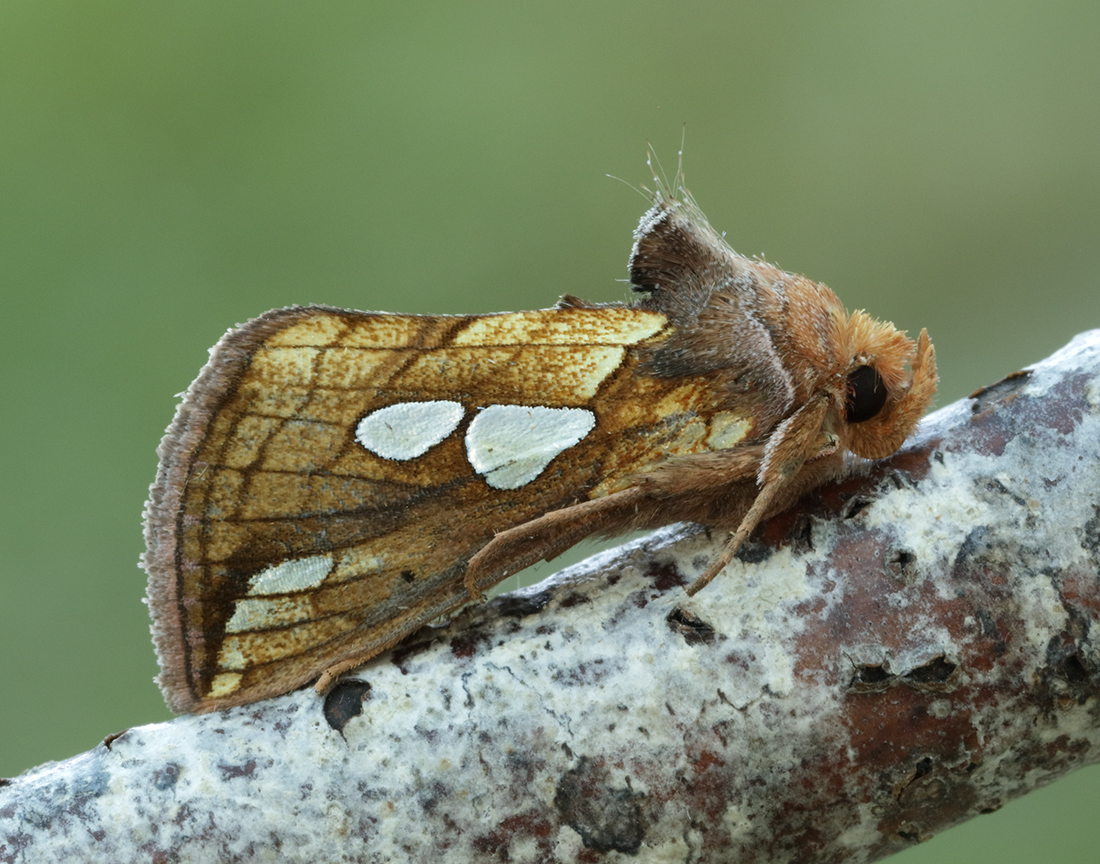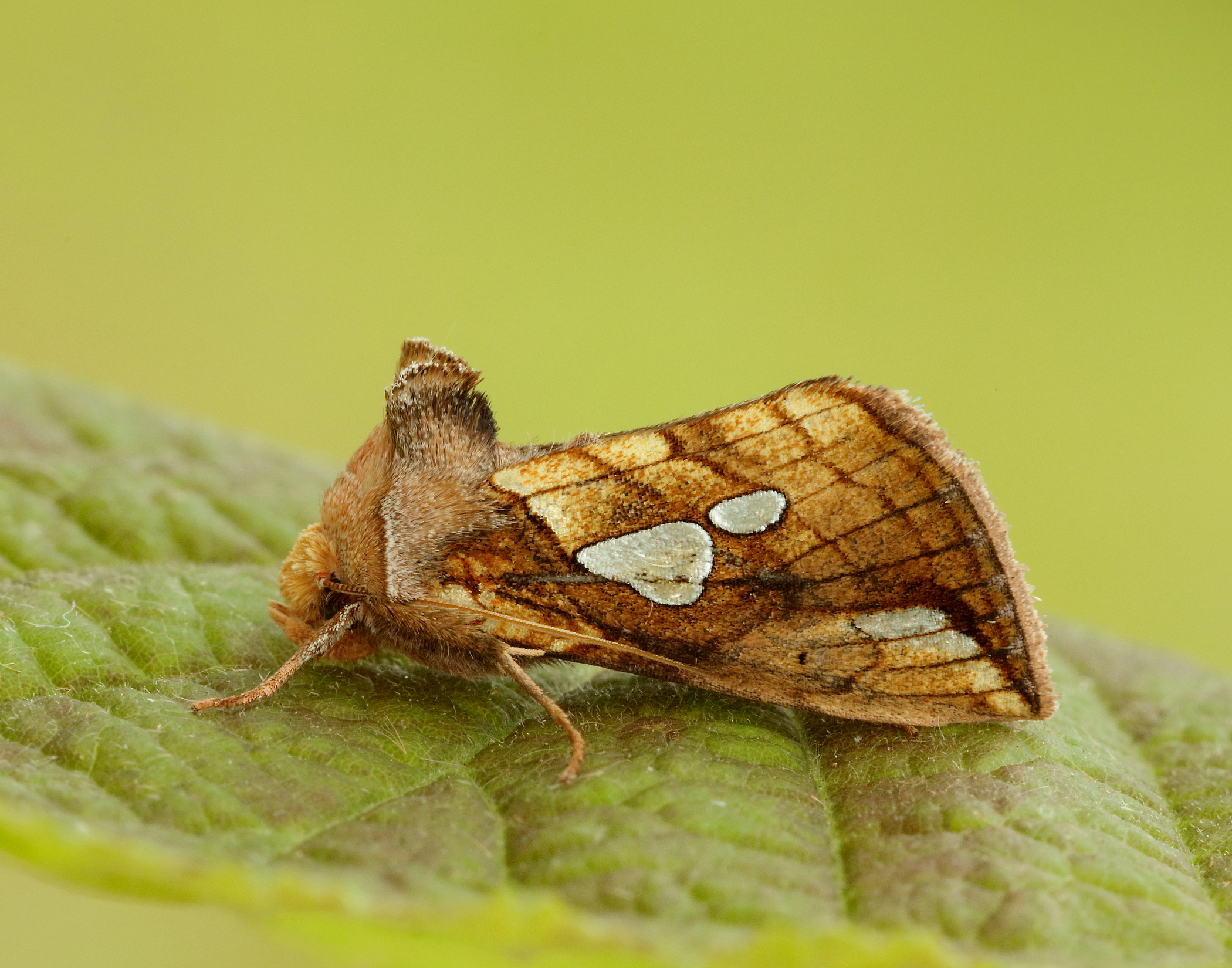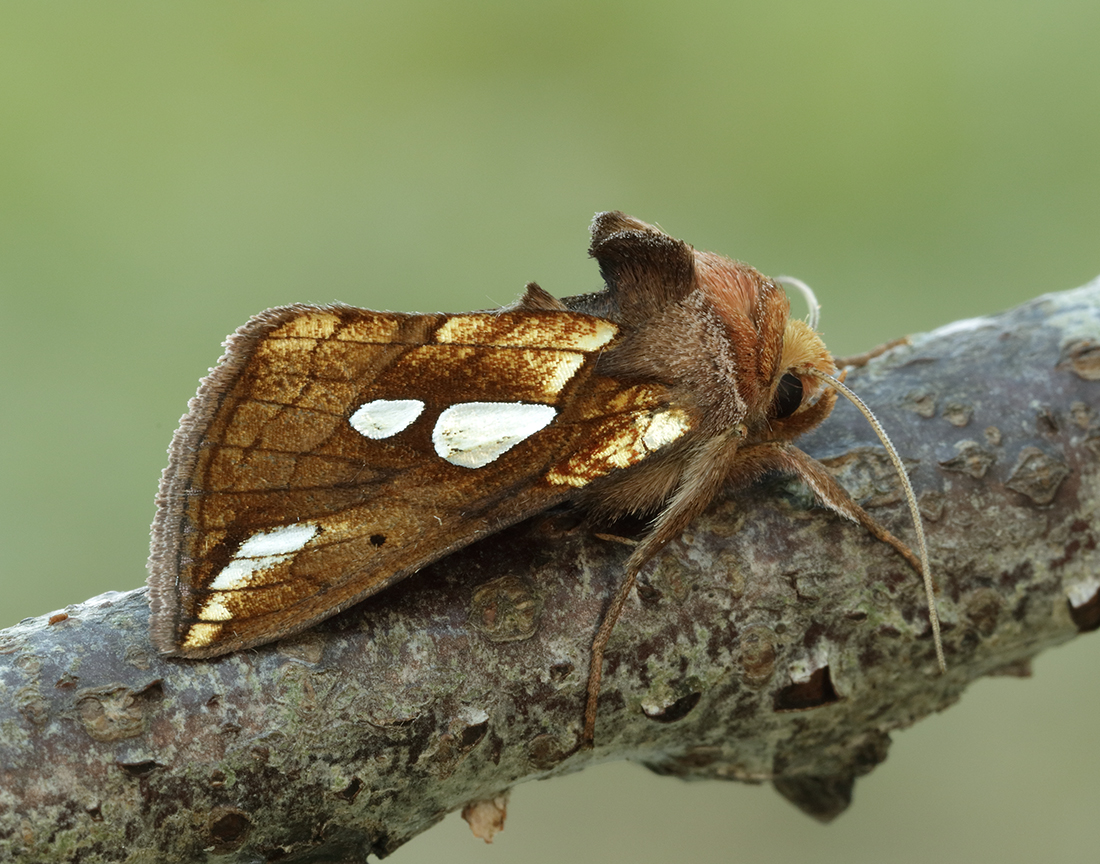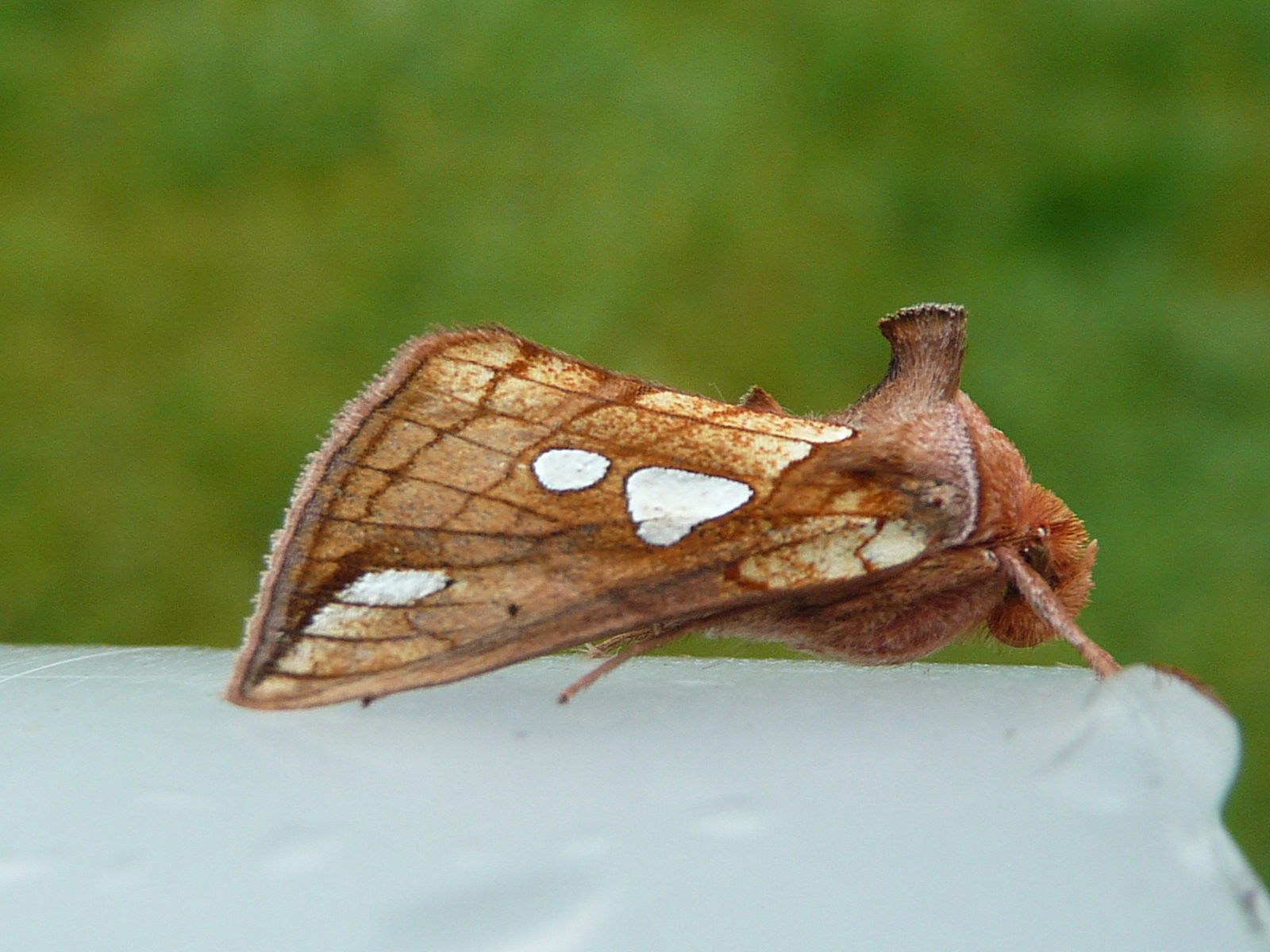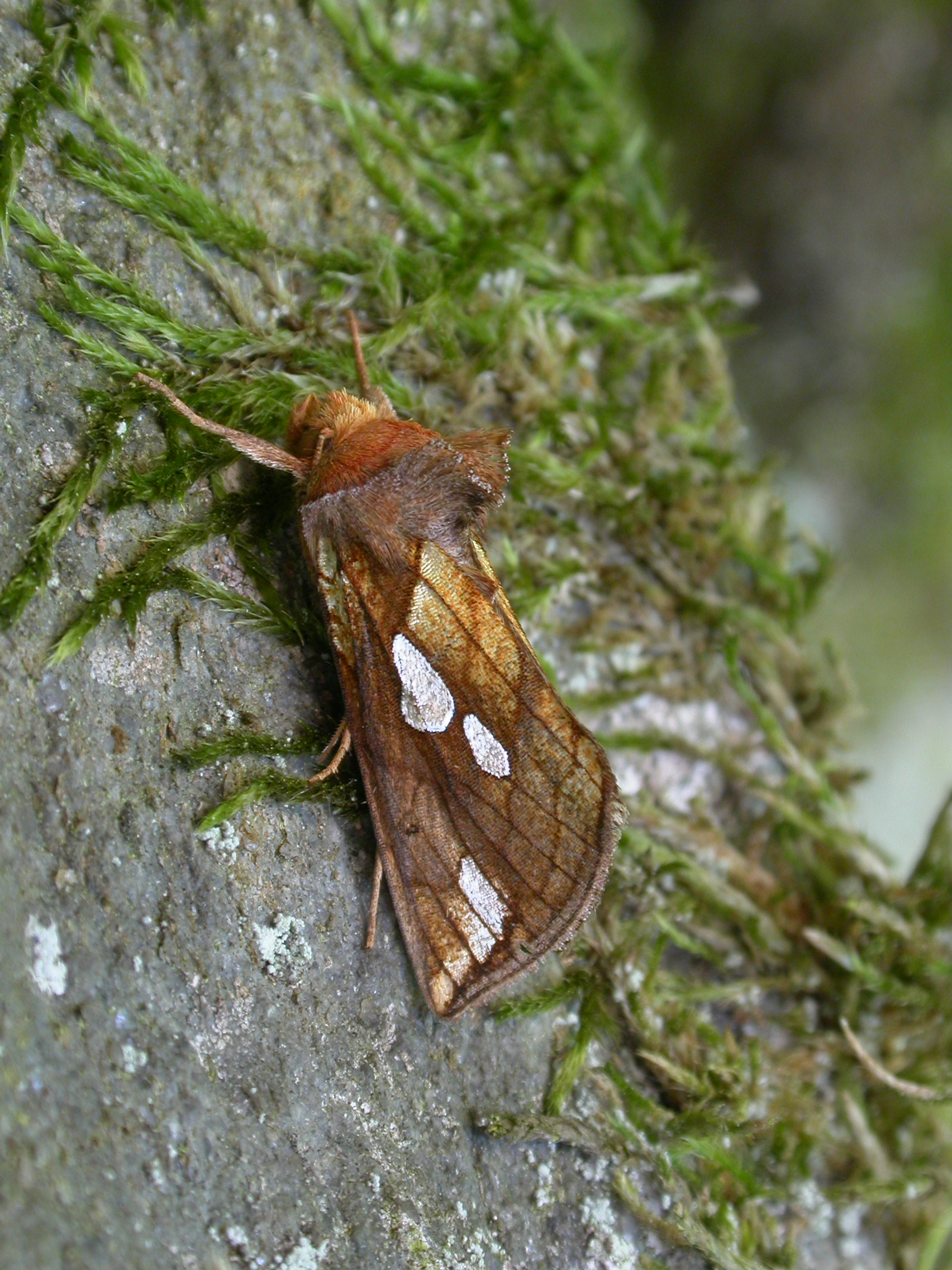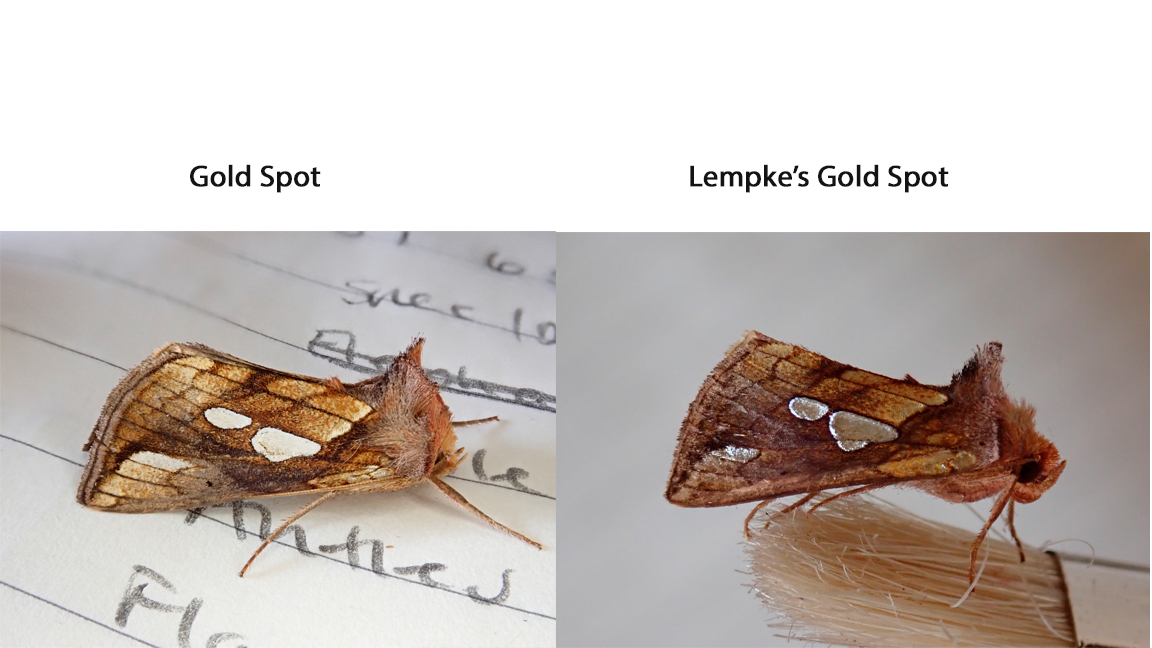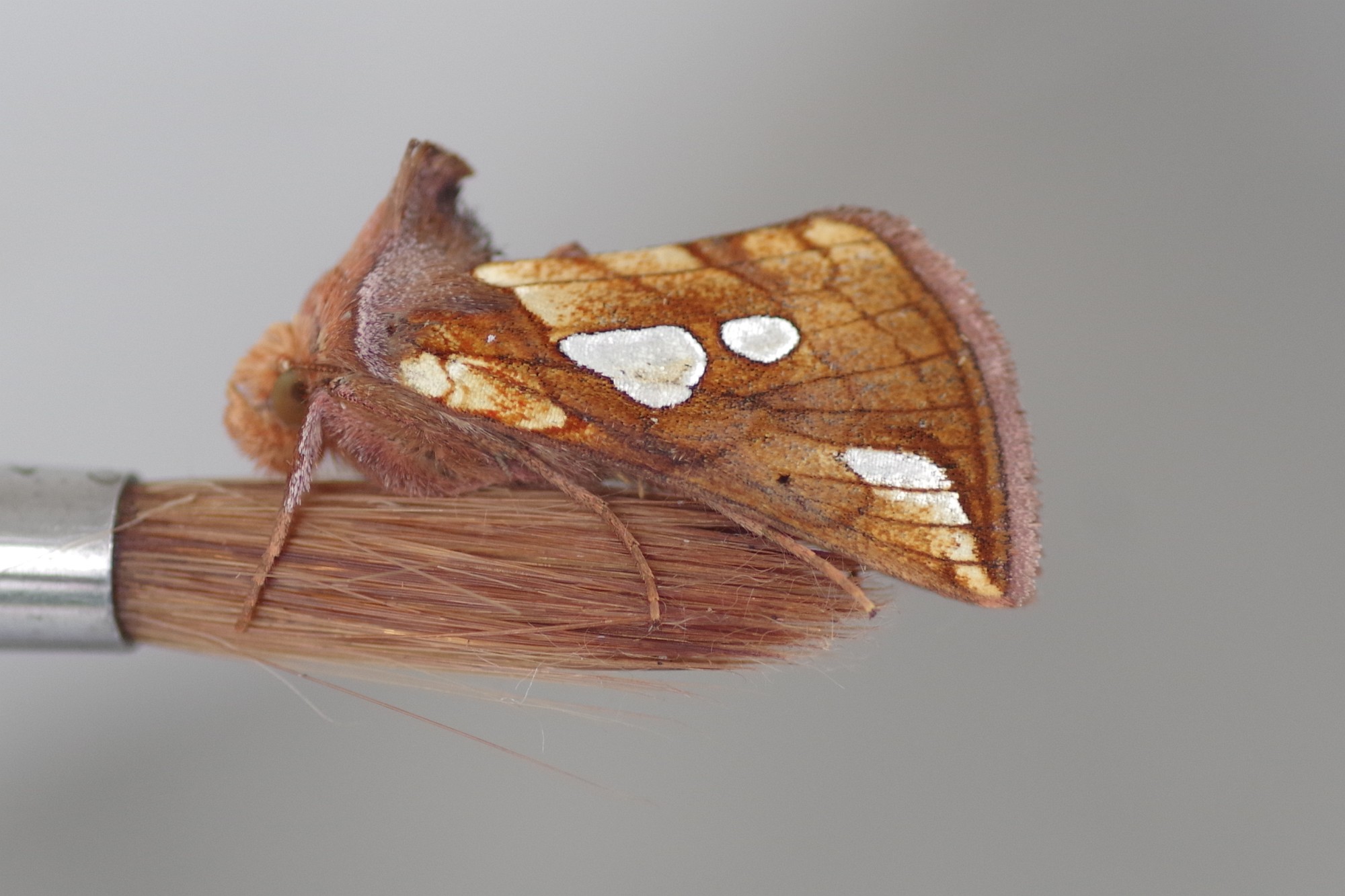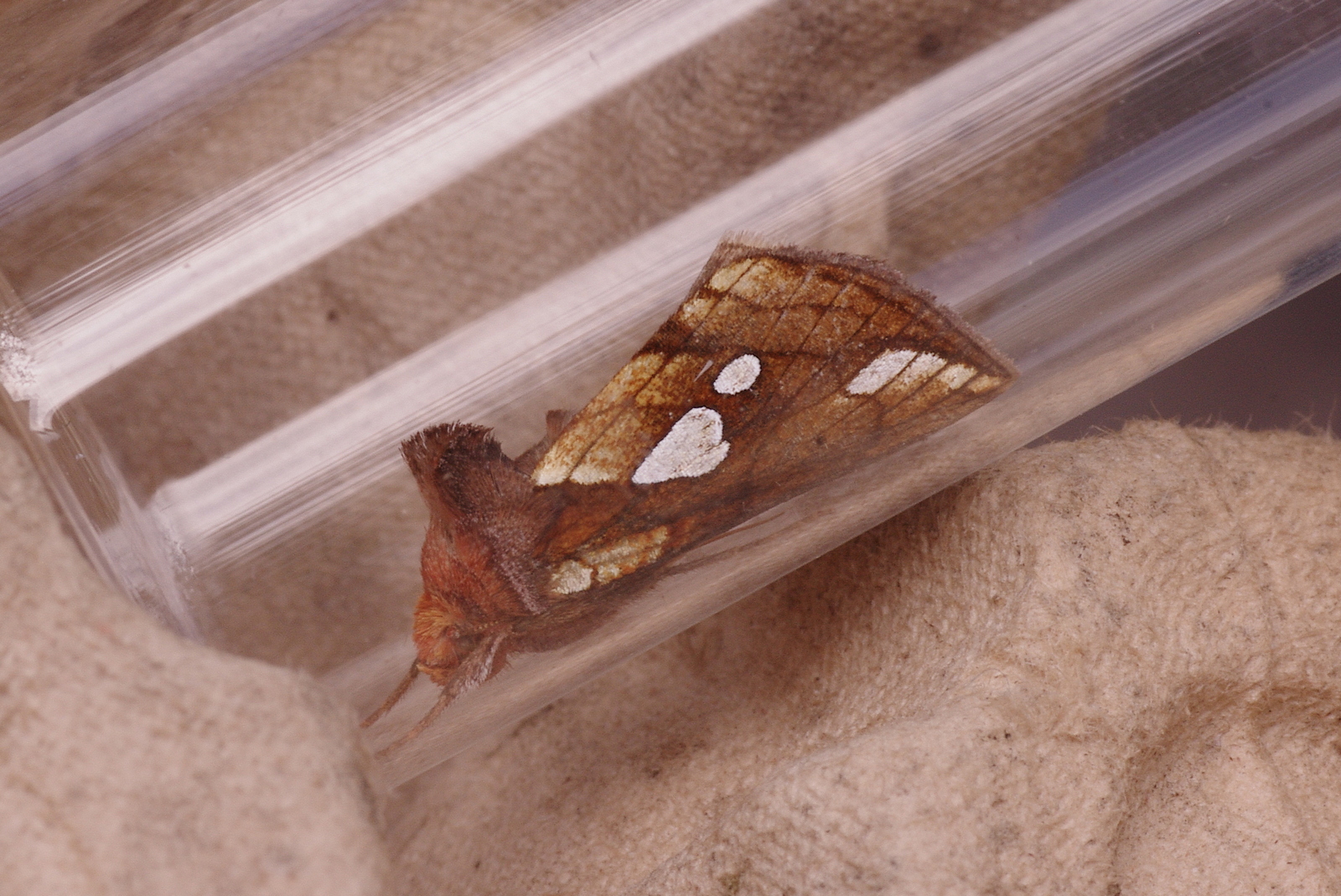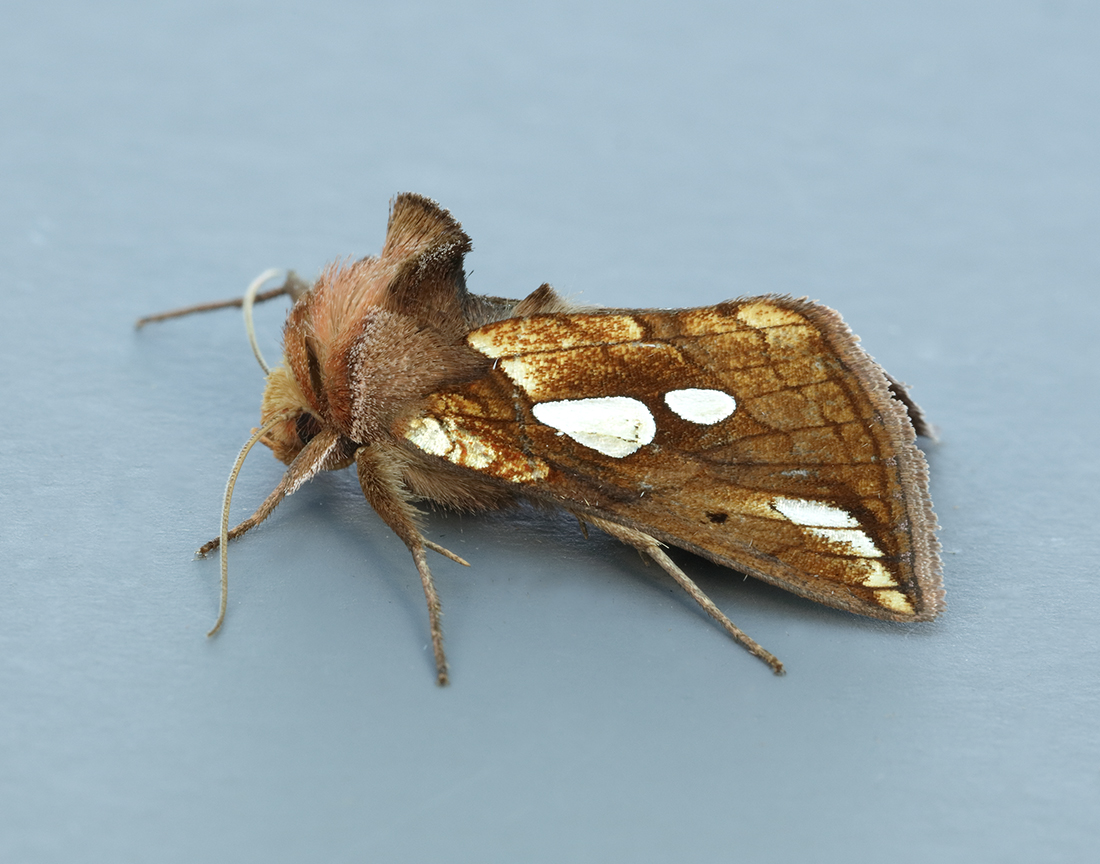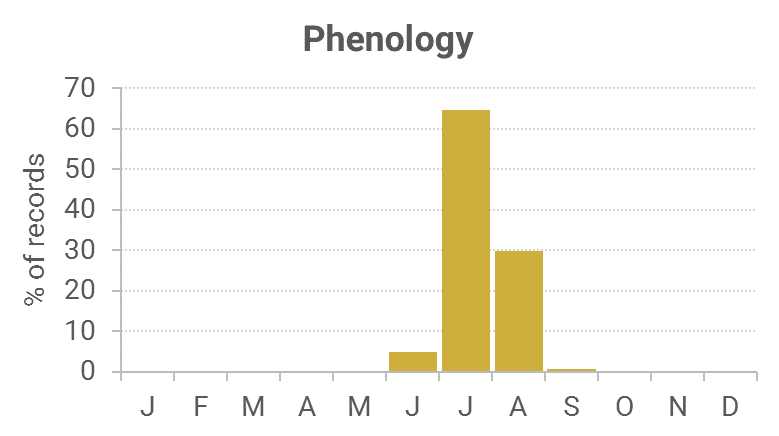Identification
Care is required to separate from Gold Spot. The shape of the post median line where it meets the silver dash is distinctive. In Lempke’s Gold Spot the line is rather blunt and obtuse, pointing towards the rear blotch resulting in a shorter, broader inner apical streak. In difficult cases genital dissection may be required. More information here, and here.
Recording Method.
Attracted to light and can be seen feeding on flowers at dusk.
Life cycle
One generation. Overwinters as a small larva during August to May. It pupates among the foodplant in a cocoon spun there.
Larval foodplants
Purple Small-reed, Wood Small-reed, Yorkshire-fog and other grasses.
Habitat
Marshes, fens and other damp areas, including upland.
History
The first records came from Sir Arthur Duncan (1909-84) who during his lifetime had found it at Closeburn and Castlehill, Dumfries (VC72), specimens identified retrospectively at National Museums Scotland.
Lempke’s Gold Spot was not recognised until the late 1960s, so our next record came in 1972 from Portpatrick. During 1976 the Bridge of Dee and Peninghame (VC74) Rothamsted stations recorded it three times; the only other RIS data is of one at Mabie Forest in 1988. In 1981 it was trapped on the Hensol Estate and the following year during the Scottish Entomologists’ gathering at Barony College, Parkgate, it was recorded by Teddy Pelham-Clinton.
From 1992 to 2010 the regular trapped sites at Kirkton, Durisdeer (VC72), Carsfad near Dalry and Old Torr had contributed a number of the century plus records, with others from suitable damp sites across the region.
The only other Wigtownshire site to the two already mentioned is Carsegowan Moss.

